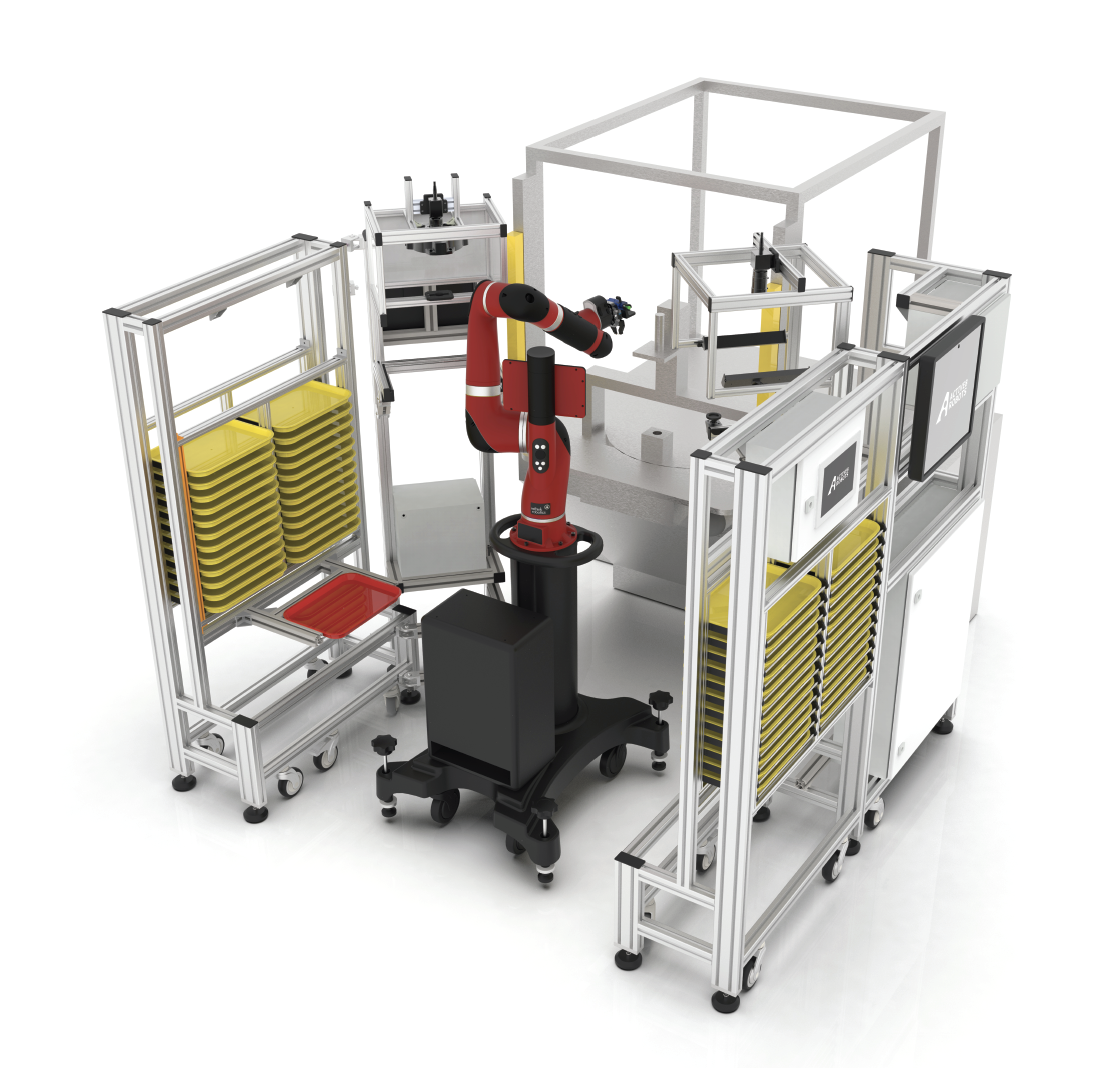Skip to: main navigation | main content | sitemap | accessibility page

Client: The Royal Mint.
Sector: Mint production (coin, medal & bullion).
Application: Commemorative and collectible coin colour printing and quality inspection.
Problem: Inconsistent and subjective quality control process reliant on human vision.
Solution: Automated unguarded collaborative robot cell integrated with existing machinery to: locate and orientate coins into position placing into printing device; delicately remove freshly printed coins; closely inspect for blemishes imperceptible to the human eye; and grade for standardised approval or rejection.
Technologies:
As the demand for commemorative and collectable coins surges across the globe, so does the demand for pristine quality. To exceed the high expectations of the discerning customer, the most stringent QC standards must be met.
A technically advanced mint production facility requires the use of the best possible technologies to achieve the desired level of quality inspection. For one coin, medal and bullion producer, using the outdated naked eye method to identify imperceptible imperfections for an exclusive series of colour enhanced coins marking a special anniversary was no longer adequate. Active8 Robots was invited to:
· carry out an in-depth appraisal of the facility;
· to produce an authoritative report detailing recommendations, implications, projections and benefits;
· set out the roadmap for achieving the vision.
The primary goal was to improve the existing quality inspection control process beyond current standards without compromising production rates.
Secondary goals included: enhancing manufacturing speeds; reducing labour dependency and associated costs; and automating the dull repetitive tasks performed by humans to enable redeployment to roles that were more cognitive and variable in nature.
Upon review of the proposal presented by Active8 Robots it was eagerly accepted that all of the above would be satisfied with the designed solution. The engineering team was subsequently invited to develop the automated robotic press tending solution and integrate it with the coin producer’s existing systems.
This innovative pad-printing cell comprised a fully safe, unguarded collaborative robot system that could be loaded with up to eight hours of product whilst running unattended. It incorporated triple-function end-of-arm-tooling to maximise productive robot movement and two high-end vision systems by Keyence – one for sending data to the robot and the other for quality inspection. Multiple programs were specially developed to accommodate a wide range of coin sizes and designs.
· The robot picks a tray of coins from the infeed rack and places it in the pick inspection jig.
· The first vision system, located above the tray, finds a valid target coin and sends location co-ordinates and rotary orientation data to the robot.
· Using a vacuum suction cup, the coin is picked from the top face and placed into an orientation jig to correct rotational alignment.
· The coin is re-picked and placed into the pad-printing vice for printing.
· On completion of the print cycle, the coin is delicately removed from the vice using a two-finger pneumatic parallel gripper, that picks it from the sides to avoid damaging the freshly printed surface.
· The coin passes through the second vision station that carries out quality control checks for colour variation and saturation, image position, paint smudges, shadowing, scratches, dirt and grease
· Finally, the coin is judged to be either a pass or a fail and is subsequently placed in the corresponding outfeed.
The bespoke solution designed, built and fully integrated by the Active8 Robots engineering team, successfully removed the need for an operative to carry out quality control using the outdated and subjective visual inspection method. The key advantage of using sophisticated machine vision systems for inspection is that the quality check process is objective, consistent and reliable. This resulted in better consistency of output quality, faster cycle times and lower labour costs.
Furthermore, the seamless integration and handover process minimised disruption to the business.
The mint producer can relax in the knowledge that are providing their customers with the quality that they expect and deserve worldwide.

![]()
© 2003 - 2024 Active8 Robots (Active Robots Ltd.) All rights reserved.
